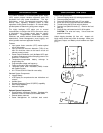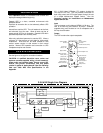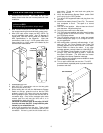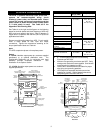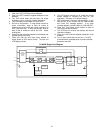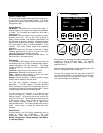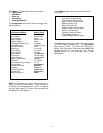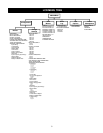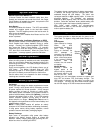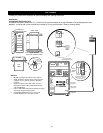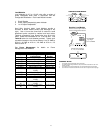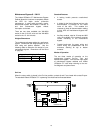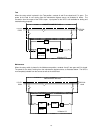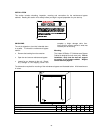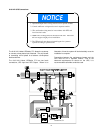
14
System Start-Up
Manual Restart after Manual Off
If Manual Restart has been selected (rather than Auto-
Restart) and someone has turned the unit off, the Output
Circuit Breaker will probably be closed. Just press the ON
button to turn on the UPS inverter.
Auto-Restart
The factory enables this feature. The UPS automatically
restarts and supplies power to the load after battery
depletion. The UPS supplies power to the load as soon as
utility service is restored.
Turning the UPS OFF disables Auto-Restart until the ON
button is pressed.
Manual Restart after Low Battery Shutdown or REPO
Manual Restart (instead of Auto-Restart) opens the Output
Circuit Breaker upon battery depletion during a power
outage. Pressing the customer-supplied REPO switch
also opens the Output Circuit Breaker. To manually
restart the UPS, close the Output Circuit Breaker (turn it
OFF, then ON to reset breaker). When the ”Press ON to
start system...” message appears, press the ON button.
Normal Operation
When the utility power is available and within acceptable
limits, the unit supplies filtered and regulated power to the
load through the inverter. The battery charger maintains a
charge on the battery.
During normal operation, the LCD display informs you of
UPS status. The display indicates when the UPS
transfers the load to or from bypass (if available), when
the load is On Battery, and when alarms or faults occur.
See the alarm chart in the Appendix for alarm message
meanings and corrective actions.
Battery Operation
On Battery
During low input voltage, the battery supplements inverter
power. During a utility power failure, the battery provides
all power required for normal operation. A fully charged
battery provides at least 10 minutes of output power.
More battery power is available if your system includes an
optional external battery cabinet (see Options). Less load
increases the battery back- up time. If your UPS supports
several computer systems, turning some of them off
allows others to run longer. Battery Run Time curves in
the Appendix show performance of the internal battery and
external battery cabinets.
NOTE: If utility power remains off, perform an orderly
shutdown of the critical load before exhausting the battery.
If utility power returns during battery operation, normal
operation resumes and battery recharging begins.
Battery Recharge
Upon return of acceptable utility power after battery
operation, the battery charger begins to charge the
batteries. Battery charging stops upon pressing the OFF
button four times or activating the REPO.
The battery charger compensates for battery temperature.
In addition, the charger has two recharge rates, user-
selectable through the LCD display. The ”turbo” rate
recharges batteries to 95% capacity within 10 times the
discharge duration. The ”standard” rate recharges
batteries to 95% capacity within 20 times the discharge
duration. Select the ”standard” factory default setting rate
if your utility system has frequent (weekly) blackouts.
With ”turbo” mode enabled, the microprocessor
determines how often to use the fast recharge rate, in
order to optimize battery life.
Bypass Operation
The bypass provides an alternate path for power to the
critical load. On bypass, utility power feeds directly to the
load.
Auto-Bypass
Upon overload or inverter
failure, the UPS
automatically transfers to
(and from) bypass.
During an overload, the
UPS attempts to
retransfer from bypass to
the inverter up to 15 times
within a 20-minute period.
If the overload prohibits
retransfer after 20
minutes, the unit remains
on bypass.
Manual Bypass
Manually select the
bypass power to the
critical load by operating
the bypass switch on the
back of the unit. When
activated, the unit immediately transfers to bypass and
turns OFF the inverter, PFC, and battery charger. The
UPS remains in bypass until the switch is moved to the
UPS position. The user may also initiate manual bypass
via the LCD display or RS-232 remote communications.
Bypass
Switch



